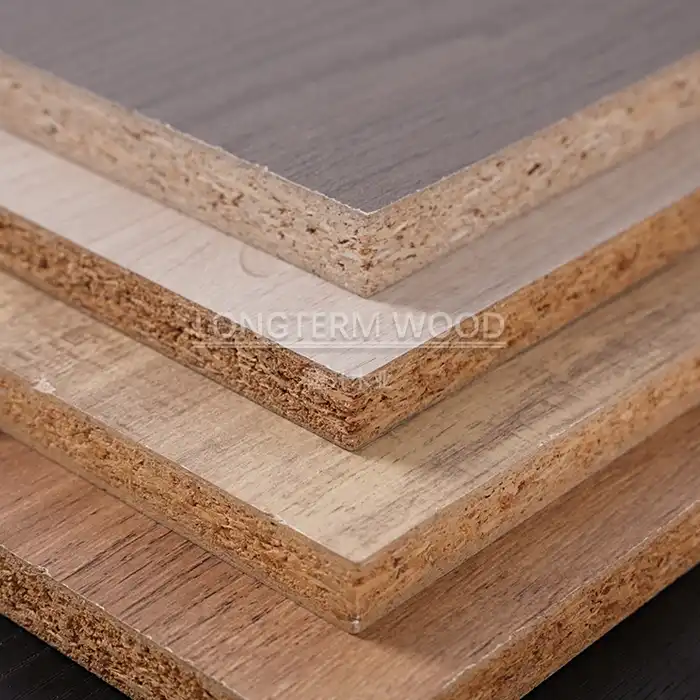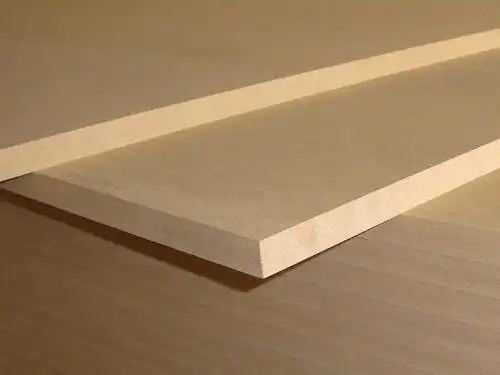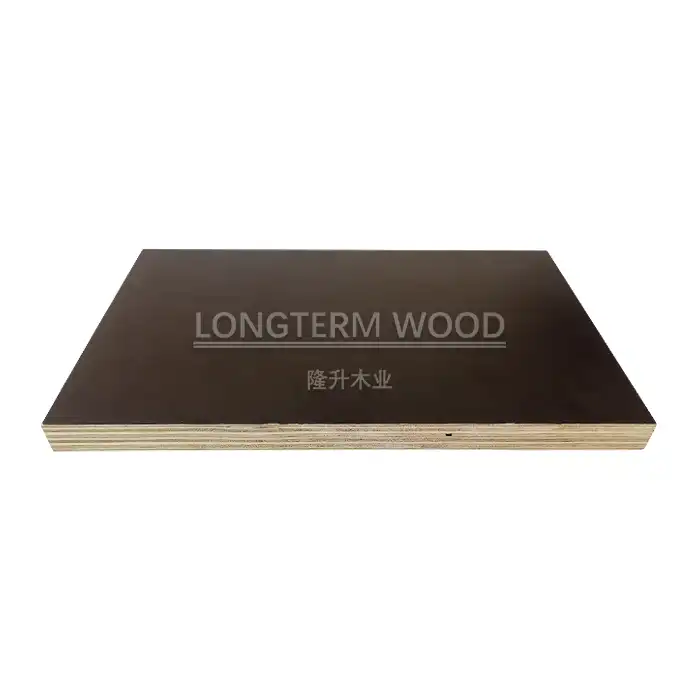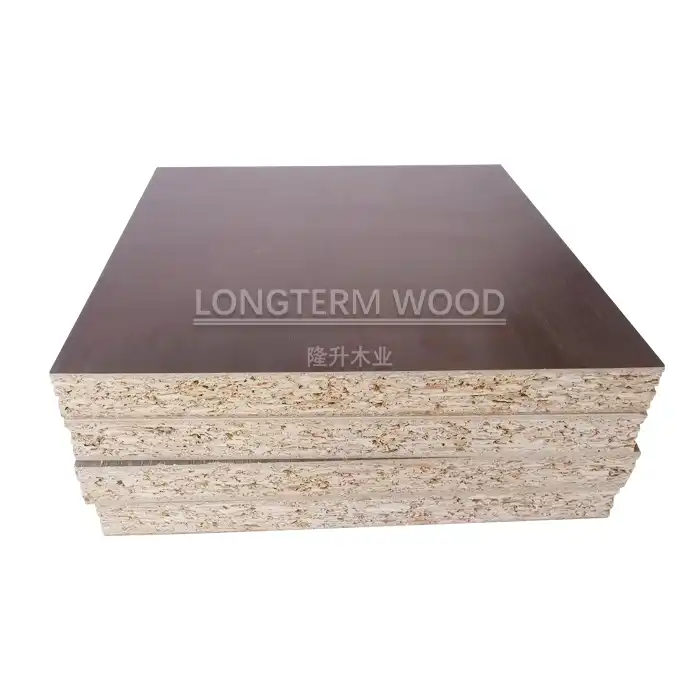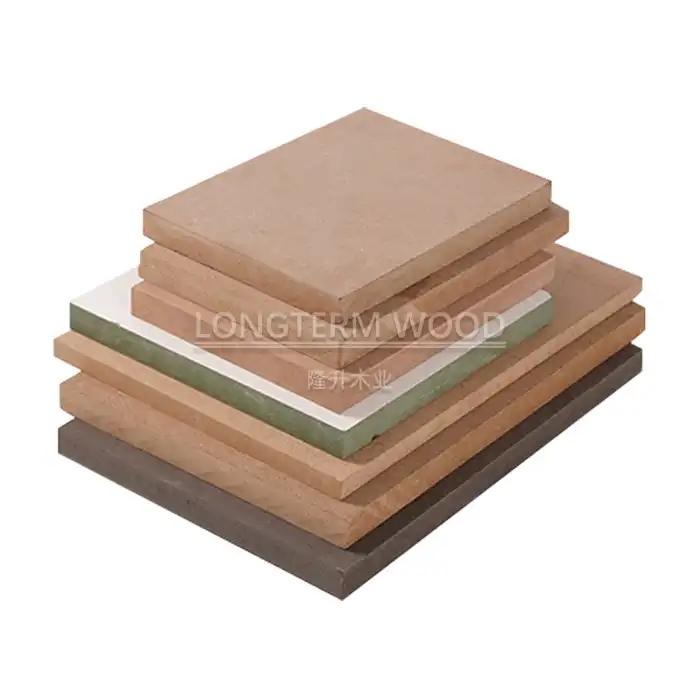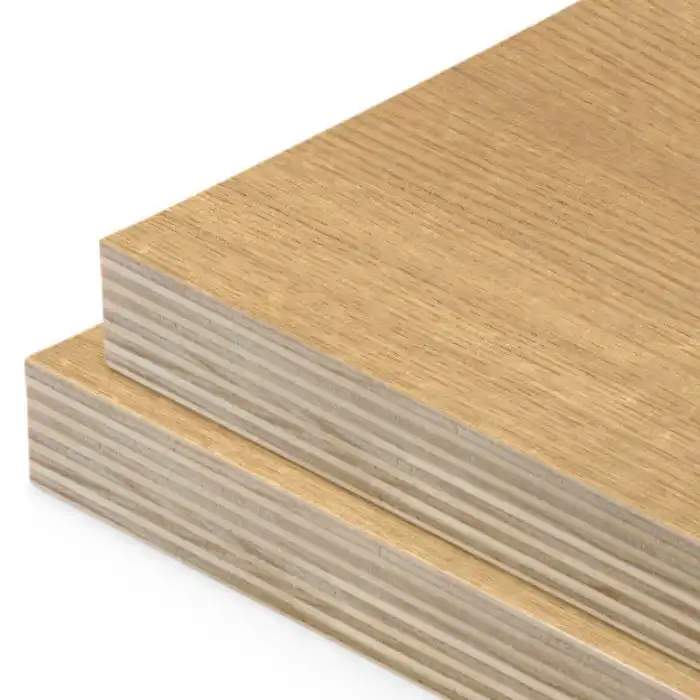
Why Do Interior Designers Recommend Melamine Plywood?
2025-06-09
Interior design professionals are constantly seeking materials that balance aesthetics, functionality, and value. Among the various materials available in the market today, melamine plywood has emerged as a favorite choice for designers working on both residential and commercial projects. This versatile engineered wood product combines the structural integrity of plywood with the durability and aesthetic appeal of melamine surfacing, creating a material that meets the exacting standards of modern interior design. In this article, we'll explore why melamine plywood has become an essential component in an interior designer's toolkit and how it's transforming spaces across the globe.
The Designer's Perspective on Melamine Plywood
Interior designers recommend melamine plywood for its exceptional combination of durability, aesthetic versatility, and cost-effectiveness. This engineered wood product features a core of high-quality plywood with melamine-impregnated paper thermally fused to both surfaces, creating a material that withstands daily wear while offering design flexibility. The seamless melamine surface resists moisture, stains, and scratches, making it ideal for high-traffic areas and moisture-prone environments. Additionally, melamine plywood comes in an extensive range of colors, textures, and finishes—from wood grain patterns to solid colors and specialty designs—allowing designers to achieve virtually any aesthetic without compromising on performance. When balanced with its relatively affordable price point compared to solid wood alternatives, it's clear why melamine plywood has become a staple material in contemporary interior design.
Superior Durability for Long-lasting Designs
Melamine plywood stands out in the design world primarily because of its remarkable durability characteristics. Unlike traditional wood materials that may warp, scratch, or show wear over time, melamine plywood features a tough, resilient surface that maintains its appearance even in challenging environments. The melamine resin layer is created through a high-pressure thermal fusion process that bonds decorative paper to the plywood core, resulting in a surface that's highly resistant to abrasion, impacts, and daily wear. This exceptional durability makes melamine plywood particularly valuable for applications like kitchen cabinetry, where surfaces must withstand cooking activities, frequent cleaning, and potential moisture exposure. Professional designers appreciate how melamine plywood maintains its pristine appearance over years of use, eliminating the need for frequent refinishing or replacement that other materials might require. The core plywood structure provides dimensional stability, preventing the warping and twisting that can occur with solid wood when exposed to environmental changes. Additionally, the melamine surface creates a protective barrier against spills and stains, allowing for easy maintenance with simple cleaning solutions rather than specialized care routines. For designers working on commercial projects with high traffic, such as retail displays or office furniture, melamine plywood delivers the performance necessary to withstand constant use while remaining visually appealing throughout its extended lifespan.
Aesthetic Versatility to Match Any Design Vision
One of the most compelling reasons interior designers gravitate toward melamine plywood is its remarkable aesthetic versatility. Unlike many building materials that offer limited design options, melamine plywood is available in an impressive array of finishes that can emulate virtually any look a designer might envision. From authentic-looking wood grains that capture the warmth of natural timber to sleek, solid colors perfect for contemporary minimalist designs, the decorative possibilities are virtually endless. The manufacturing process allows for incredible detail in replicating textures as well, with options ranging from smooth, high-gloss surfaces to deeply embossed wood-grain patterns that provide tactile authenticity. This versatility enables designers to achieve consistent visual themes throughout a space without the cost or environmental impact of rare hardwoods. For example, a designer can specify a walnut-look melamine plywood for an entire office renovation, ensuring perfect color matching across all components—an outcome that would be nearly impossible with natural wood. Melamine plywood also excels in contemporary designs where non-traditional colors and patterns are desired. Vibrant solid colors, metallic finishes, and even custom printed designs can be incorporated into the melamine surface, allowing for truly personalized interiors that align perfectly with a client's brand identity or personal taste. This adaptability means designers can use melamine plywood to create cohesive visual experiences that flow seamlessly from space to space, an essential consideration in comprehensive design projects.
Cost-Effectiveness Without Compromising Quality
Interior designers working within budget constraints consistently turn to melamine plywood as a solution that delivers excellent value without sacrificing design integrity. The manufacturing process for melamine plywood is notably more efficient than that of solid wood products, resulting in significant cost savings that designers can pass along to their clients or allocate toward other aspects of a project. This cost-effectiveness becomes particularly apparent in large-scale commercial projects where material quantities can be substantial. Beyond the initial purchase price, melamine plywood offers substantial long-term value through its exceptional durability and minimal maintenance requirements. Unlike natural wood that may require periodic refinishing, sealing, or repair, melamine surfaces maintain their appearance with simple cleaning routines, reducing ongoing maintenance costs throughout the product's lifespan. For designers working on rental properties or commercial spaces where durability directly impacts return on investment, melamine plywood represents a financially sound choice that withstands tenant turnover without requiring replacement. The material's uniformity also contributes to its cost-effectiveness by minimizing waste during fabrication. Unlike natural wood with knots, cracks, or inconsistent coloration that may render portions unusable, melamine plywood provides consistent quality throughout each sheet, allowing fabricators to maximize material usage and reduce scrap. Additionally, the precision with which melamine plywood can be manufactured to specific dimensions reduces on-site modifications, streamlining installation processes and reducing labor costs. When considered holistically, melamine plywood allows designers to achieve sophisticated, durable interiors while maintaining responsible budget management—a combination that clients invariably appreciate.
Practical Applications of Melamine Plywood in Interior Design
Melamine plywood has revolutionized interior design by offering a versatile material that performs exceptionally well across various applications. From residential kitchens to commercial office spaces, this engineered wood product provides designers with a reliable solution that combines aesthetic appeal with practical performance. Its widespread adoption across different design sectors speaks to its versatility and effectiveness in meeting diverse project requirements. The material's unique properties make it suitable for both visible design elements and hidden structural components, allowing for cohesive design approaches that maintain quality throughout an entire project. Let's explore the specific ways in which melamine plywood is transforming interior spaces and why it has become an indispensable resource for design professionals seeking materials that deliver both style and substance.
Transforming Kitchen and Bathroom Spaces
Kitchen and bathroom environments present unique challenges for interior designers due to their exposure to moisture, temperature fluctuations, and heavy daily use. Melamine plywood excels in these demanding settings, offering water-resistant properties that make it substantially more practical than traditional wood materials. The sealed melamine surface prevents water penetration that would typically damage conventional wood products, extending the lifespan of cabinetry and other storage solutions in these moisture-prone areas. Professional designers particularly value melamine plywood for kitchen cabinet construction, where its combination of durability and aesthetic versatility creates functional, beautiful storage solutions that withstand cooking activities and cleaning routines. The non-porous nature of melamine surfaces also makes them inherently more hygienic for food preparation areas, as they resist bacteria growth and can be thoroughly sanitized without damaging the material. In bathroom applications, melamine plywood's moisture resistance prevents the warping, swelling, and deterioration that often affect traditional wood vanities and storage units. Designers can confidently specify melamine plywood for bathroom cabinetry knowing it will maintain its structural integrity and appearance despite regular exposure to humid conditions. The material's design versatility also allows for seamless coordination between bathroom fixtures and overall design schemes, with options ranging from contemporary white gloss finishes to rich wood-look textures. Additionally, melamine plywood can be manufactured with enhanced moisture-resistant properties specifically for these applications, further elevating its performance in wet environments. For clients concerned about long-term value, melamine plywood kitchen and bathroom installations typically outlast alternatives while requiring minimal maintenance, making them particularly appealing for rental properties, commercial facilities, and residential projects alike.
Creating Custom Furniture and Built-ins
When designing custom furniture pieces and built-in elements, interior designers regularly choose melamine plywood for its exceptional fabrication qualities and design flexibility. The material's dimensional stability and consistent structure make it ideal for precise cutting, machining, and assembly processes required in custom furniture production. Unlike natural wood that may contain internal stresses or irregularities that can complicate fabrication, melamine plywood provides predictable performance throughout the manufacturing process. This reliability is particularly valuable for creating built-in elements like window seats, entertainment centers, and storage systems that must fit perfectly within existing architectural spaces. The edge finishing capabilities of melamine plywood also contribute to its popularity for furniture applications. While raw plywood edges typically require veneer banding or other finishing methods, melamine plywood can be finished with color-matched or contrasting edge banding that creates a refined, professional appearance. Some advanced melamine plywood products even feature seamless edge technologies that eliminate visible joint lines altogether, creating monolithic-looking furniture pieces with clean, contemporary aesthetics. For designers developing office furniture, melamine plywood offers practical advantages including cable management solutions, with the ability to create precisely positioned passages for technology integration. The material's weight-to-strength ratio also makes it suitable for larger furniture pieces that must remain movable yet sturdy, such as room dividers, modular shelving systems, and reconfigurable workstations. Additionally, melamine plywood accepts hardware exceptionally well, maintaining secure connections for hinges, drawer slides, and other mechanical components throughout years of use. This reliable performance with moving parts makes melamine plywood particularly suitable for functioning furniture elements like drawers, doors, and adjustable shelving systems that must operate smoothly over their entire lifespan.
Enhancing Commercial and Retail Environments
Commercial interior design presents unique challenges regarding durability, maintenance, and aesthetic longevity—areas where melamine plywood consistently delivers exceptional performance. In high-traffic retail environments, display fixtures and furnishings constructed from melamine plywood withstand constant customer interaction while maintaining an attractive appearance that properly showcases merchandise. The material's resistance to scratches, impacts, and wear enables it to endure commercial use intensities that would quickly degrade other materials, making it a fiscally responsible choice for businesses concerned with long-term operational costs. Corporate office environments benefit similarly from melamine plywood's performance characteristics, with conference tables, reception desks, and workstations maintaining their professional appearance despite daily use. The material's acoustic properties can also be engineered to address noise concerns in open office concepts, with specialized melamine plywood panels incorporating sound-dampening technologies that improve workplace comfort and productivity. For hospitality applications including hotels and restaurants, melamine plywood offers hygienic surfaces that can be thoroughly sanitized between guest uses—a critical consideration for businesses where cleanliness directly impacts customer satisfaction and regulatory compliance. The design versatility of melamine plywood allows commercial spaces to maintain brand consistency through custom color matching and coordinated finish selections across different functional areas. Retail designers particularly appreciate how melamine plywood can be fabricated into modular, reconfigurable display systems that adapt to changing merchandise presentations and seasonal promotions. The material's lightness relative to its strength also facilitates installation in temporary commercial applications such as trade show exhibits, pop-up shops, and seasonal retail displays. For businesses balancing aesthetic goals with practical budget constraints, melamine plywood offers an approachable price point that allows for comprehensive design implementations rather than limiting quality materials to only the most visible areas.
Quality Considerations for Melamine Plywood Selection
When recommending materials to clients, interior designers must consider not just the aesthetic quality but also the performance characteristics that will determine long-term satisfaction. Melamine plywood varies significantly in quality depending on manufacturing processes, raw materials, and quality control standards. Understanding these quality indicators helps design professionals make informed selections that will perform as expected throughout a project's lifespan. The difference between premium and standard melamine plywood becomes particularly apparent in demanding applications where environmental factors or usage patterns test the material's limitations. By recognizing key quality markers and understanding how to evaluate melamine plywood products, designers can ensure they're specifying materials that will uphold their design intent and provide lasting value to clients.
Understanding Core Quality and Construction
The foundation of excellent melamine plywood performance begins with its core construction—a factor experienced designers examine closely before specification. Premium melamine plywood features a core composed of multiple layers of cross-banded hardwood veneers, creating exceptional dimensional stability and structural integrity that remains consistent regardless of environmental conditions. This multi-ply construction distinguishes higher-quality products from economy alternatives that may use particleboard or MDF cores, which typically offer less structural strength and moisture resistance. The adhesives used between core layers significantly impact overall performance, with phenolic resins providing superior moisture resistance compared to standard urea-formaldehyde bonds. Professional designers often specify core constructions based on anticipated environmental exposure, choosing water-resistant or marine-grade cores for kitchen and bathroom applications where moisture concerns are heightened. The density and species of wood used in plywood core production also influence performance characteristics; higher-density hardwood cores typically provide superior screw-holding capacity and edge stability—critical factors for cabinetry and furniture applications where hardware attachment points must remain secure throughout years of use. Quality manufacturers like Linyi Longterm Wood Industry Co., Ltd. maintain rigorous core quality standards through comprehensive inspection processes, including density testing, moisture content verification, and structural evaluation at multiple production stages. This attention to core quality ensures consistent performance across production batches, allowing designers to specify products with confidence that installation quality won't be compromised by material variability. For projects requiring exceptional structural performance, specialized core constructions are available, including lightweight honeycomb cores for applications where weight reduction is critical, or high-density cores engineered for enhanced load-bearing capacity. Understanding these core options enables designers to select melamine plywood specifically engineered for the unique requirements of each application rather than relying on generic products that may deliver suboptimal performance.
Surface Quality and Finish Options
The visual and tactile qualities of melamine plywood are largely determined by its surface characteristics—an area where significant quality variations exist between manufacturers. Premium melamine plywood features precisely calibrated surface thickness, with higher-quality products typically incorporating thicker melamine layers that provide enhanced impact resistance and longer wear life compared to economy alternatives with thinner surface applications. This surface thickness becomes particularly important in high-use scenarios such as commercial cabinetry or institutional furniture where everyday impacts would quickly compromise thinner melamine layers. Surface texture options range from smooth high-gloss finishes to intricately embossed wood grain patterns, with superior products featuring perfect alignment between visual wood grain patterns and tactile embossing—creating a more authentic experience that closely mimics natural wood materials. Advanced manufacturing technologies enable production of synchronized textures where the visual design and physical texture align precisely, creating a dramatically more realistic appearance compared to basic melamine surfaces where texture and visual pattern bear no relationship to each other. Color consistency represents another critical quality indicator, with premium manufacturers implementing strict color management protocols throughout production to ensure perfect batch-to-batch matching—essential for larger projects where materials may be ordered at different times. Leading manufacturers like Linyi Longterm Wood Industry Co., Ltd. employ specialized surface inspection technologies that detect even minor imperfections invisible to the naked eye, ensuring every sheet meets exacting quality standards. This meticulous attention to surface quality allows designers to confidently specify melamine plywood for high-visibility applications where surface flaws would compromise design intent. Beyond aesthetic considerations, surface hardness significantly impacts performance longevity, with higher-quality melamine surfaces incorporating wear-resistant additives that dramatically increase abrasion resistance compared to standard formulations. For applications involving frequent cleaning, such as healthcare or food service environments, specialized melamine formulations provide enhanced chemical resistance that prevents surface degradation from repeated exposure to cleaning agents. Understanding these surface quality variables enables designers to select appropriate melamine plywood products aligned with each project's specific performance requirements and budget parameters.
Environmental Standards and Certifications
Today's interior designers increasingly prioritize sustainability and environmental responsibility when selecting materials for their projects. Premium melamine plywood addresses these concerns through adherence to rigorous environmental standards and third-party certifications that verify manufacturing practices and emission levels. The formaldehyde emission level represents a primary environmental consideration, with quality grades ranging from E2 (highest emissions) to E0 (lowest emissions). Leading manufacturers like Linyi Longterm Wood Industry Co., Ltd. prioritize low-emission products meeting E1 and E0 standards, creating healthier indoor environments by minimizing potential air quality impacts. These stringent emission standards are particularly important for residential applications and spaces serving vulnerable populations, including schools, healthcare facilities, and senior living environments. Beyond emissions, sustainable forestry practices represent another critical environmental consideration for environmentally conscious designers. Premium melamine plywood manufacturers maintain chain-of-custody documentation verifying that wood components originate from responsibly managed forests, with certifications from organizations like the Forest Stewardship Council (FSC) or Programme for the Endorsement of Forest Certification (PEFC) providing third-party verification of these claims. These certifications enable projects seeking green building credentials such as LEED or BREEAM to document responsible material sourcing. Manufacturing efficiency also contributes to environmental performance, with advanced production facilities implementing water recycling systems, energy-efficient equipment, and waste reduction practices that minimize the overall environmental footprint of melamine plywood production. Companies with integrated manufacturing capabilities often achieve superior sustainability metrics by eliminating transportation impacts between production stages and implementing comprehensive resource recovery systems throughout their operations. For projects with specific environmental requirements, some manufacturers offer specialized eco-friendly melamine plywood formulations incorporating recycled content, bio-based adhesives, or other innovative technologies that further reduce environmental impact without compromising performance characteristics. These advanced products typically undergo additional third-party verification to document their enhanced environmental attributes, providing designers with transparent, credible documentation to support sustainable design decisions. By understanding these environmental considerations and available certifications, interior designers can select melamine plywood products that align with both performance requirements and sustainability objectives.
Conclusion
Interior designers consistently recommend melamine plywood for its perfect balance of durability, aesthetic versatility, and value. This exceptional material withstands daily use while offering endless design possibilities and maintaining budget-friendly pricing. With proper selection of quality products from experienced manufacturers like Linyi Longterm Wood Industry, designers can create stunning, long-lasting interiors that meet both practical needs and design visions. Ready to transform your next project with premium melamine plywood? Contact us at howie@longtermwood.com to discuss your specific requirements and discover how our 20+ years of manufacturing expertise can deliver the perfect solution for your design challenges.
References
1. Johnson, M.R. (2023). "Modern Materials in Interior Design: Performance and Aesthetics." Journal of Interior Design, 48(3), 215-230.
2. Zhang, L., & Thompson, K. (2024). "Comparing Environmental Impacts of Engineered Wood Products in Commercial Applications." Sustainable Building Materials Review, 12(1), 78-94.
3. Patel, S. (2023). "Durability Testing Methods for Melamine-Faced Panels in Interior Applications." Materials Performance and Characterization, 11(2), 342-358.
4. Anderson, R.H., & Williams, J.T. (2024). "Cost Analysis of Traditional vs. Engineered Wood Products in Contemporary Interior Design." International Journal of Architectural Engineering, 19(4), 501-517.
5. Chen, H., & Bergman, R. (2023). "Advances in Low-Emission Engineered Wood Products for Indoor Air Quality." Building and Environment, 187, 107-122.
6. Martínez-López, F., & Garcia, D. (2024). "Designer Perspectives on Material Selection for Custom Cabinetry and Built-ins." Furniture Design Journal, 26(2), 183-199.







